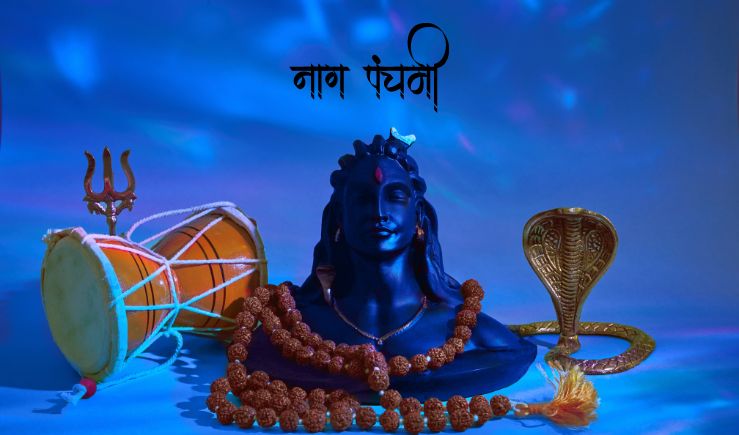Nag Panchami 2024 : Nag Panchami is one of the major festivals of Hindus connected with the worship of serpent deity gods, predominantly followed by women everywhere in India. This festival holds a great amount of religious significance for many devotees who pray for blessings from the snake deities, which have a special mention in Hindu mythology. According to Drik Panchang, the day of Nag Panchami falls on the Shukla Paksha Panchami in the holy month of Sawan.
Significance of Nag Panchami
The Hindus celebrate Nag Panchami with great reverence, believing that any puja or offering made to snakes will reach their serpent gods. Therefore, live snakes are usually worshipped on that day, serving as the representatives of those divine beings. Serpent gods, or Nagas, in Hinduism are worshiped for two major reasons, protection and divinity. Among hundreds of snake deities, twelve are more worshipped during the puja of Nag Panchami: Ananta, Vasuki, Shesha, Padma, Kambala, Karkotaka, Ashvatara, Dhritarashtra, Shankhapala, Kaliya, Takshaka, and Pingala. The epic Mahabharata also contains the relevance of the festival. Out of vengeance, following his father’s death due to snakebite, the legendary King Janamejaya, Parikshit’s son, launched a yajna to exterminate all of them. This yajna was done very powerfully, and it reached a point where it was going to destroy all the snakes. At this point, the intervention of Sage Astika, one of the wisest and most learned sages, stopped the yajna and saved the snakes from becoming extinct. It is said that this yajna was finally stopped on Panchami Tithi, and so it is celebrated as Nag Panchami. This story brings out the basic tenets of the festival: forgiveness, protection of all life, and the sanctity of life.
Nag Panchami: Puja Rituals
The rituals associated with Nag Panchami are deeply symbolic and are performed with a lot of devotion. Devotees start the day by getting up early, preferably before sunrise, and then take a purifying bath. After cleaning themselves, they prepare for the worship of the snake god, along with Lord Shiva to whom serpents are otherwise significantly related in Hindu mythology.
In this puja, one offers fruits, flowers, sweets, and milk to the Nag Devta, the serpent god. All this offering is done to show respect to these serpent deities and to satisfy them. Moreover, offering milk is very auspicious and considered to please the serpents by satisfying their hunger.
More importantly, Nag Panchami becomes special for all those who have Kaalsarp Dosh or any other astrological affliction regarding the planets Rahu and Ketu in their horoscope. According to popular beliefs, it is performed to alleviate the fallacies of these planetary positions with the puja of Nag Devta, which will ensure peace and prosperity in the devotee’s life.
Nag Panchami is much more than a worship day; it serves as a channelized thinking process, reflecting upon the peaceful coexistence between man and nature. Serpent god worship by their devotees makes them realize respect for these creatures—powerful and mysterious yet playing their role in the cosmic scheme of things. Through the rituals and stories associated with Nag Panchami, one remembers balance, protection, and reverential preservation of all living beings.
With the festival drawing closer, the beginning of such holy rituals would be started by these devotees. Praying to the serpent deity for keeping them and their families in good health would become the requisite spirit. The Nag Panchami observance remains one of the integral traditions within the Hindu culture and reflects deep spiritual bonding between man and nature.










